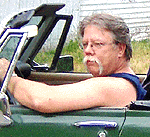1⁄35Building an Upgraded Kingfisher
The resin cockpit was so impressive I was happy to begin with itís assembly. The parts are so well cast a few simple passes with a sharp x-acto knife was usually enough to release it from itís pouring plug. The amount of detail cast into the larger resin cockpit tubs has to be seen in person to be believed. This also allows the designer to use less added parts to get a very busy and realistic look once itís finished. All interior clutter such as the old cockpits mounting pins are removed and the interior of the fuselage halves are sanded and smoothed in preparation for a coat of aluminum paint and the front of the fuselage is removed along a specified panel line to accommodate a new resin firewall. I chose to leave the smaller resin parts on their pour stubs for painting but did clean up the pilot and gunner tubs, and the front and back pilot bulkheads, seats and upper radio deck. These were then placed on double-sided tape and all the resin parts were painted Model Master aluminum. When that was perfectly dry 2 coats of Future were applied about 1/2 hour apart-to seal the enamel and prepare the parts for a wash. The next day a wash of 75% thinner and 25% burnt umber was applied with a pointed brush. Just dip the brush in the wash and let it wick around the raised details and settle into the low spots. If you make to much of a mess you can remove it with a Q-tip dipped in thinner-if you rub too much in one area it will remove the future and finally the underlying paint so take care! While that was drying I assembled the kits wings and taped the fuselage together. This is necessary because the new cockpit tub doesnít allow the wing to travel through the fuselage. So you have to insert the assembled wings into the taped together fuselage as if you were really gonna build it the good old Monogram way but then you take your knife tip and scribe the top wing along the inside of the fuselage. Then scribe a line along the bottom wing-you canít reach the inside so this one will have to be scribed along the outside of the fuselage. Remove the wing from the fuselage and remove the center. Remember to allow a couple of millimeters for the bottom wing because you scribed along the outside of the fuselage, not the inside. Make sure the wings are aligned and centered before you start scribing these lines. Once you cut this if you screw it up youíre gonna have to buy another kit. What you have, when youíre done, is a port and starboard wing that just fits into the fuselage. Cutting Edge supplies 2 wing inserts. One male, one female. I set these in place-generally-with slow setting super glue, then set the wings in place and adjusted them to fit and left it to set for an hour or so. They may then be removed to allow work on the fuselage and cockpits to continue. Copyright ©2002 - Text and Photos by Mike Taylor (modelguy2) . All Rights Reserved. |
 † †
|
†
















